Understanding Local SEO and Its Impact on Business Growth
- Published on
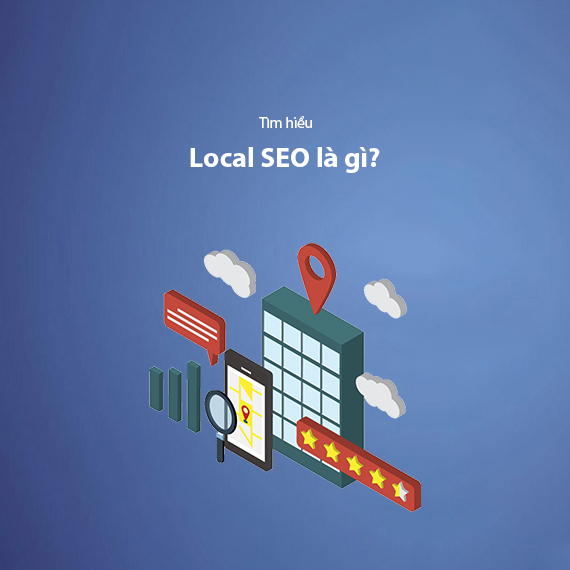
- What is Local SEO?
- What Are the Benefits of Local SEO for Businesses?
- Attract Local Potential Customers
- Boost Visibility on Google Maps
- Improve Conversion Rates
- Build Trust Through Online Reviews
- Save Advertising Costs
- Enhance User Experience
- Key Ranking Factors in Local SEO
- Google My Business (GMB)
- Customer Reviews and Responses
- NAP Consistency
- Backlinks From Local Sources
- Optimize for Local Keywords
- Mobile Optimization
- Social Media Engagement
- How Is Local SEO Different From Traditional SEO?
- Why Combine Both Strategies?
- Effective Local SEO Implementation Process
- Optimize Your Brand Image
- Provide Complete and Consistent Contact Information
- Register and Optimize Google My Business (GMB)
- Optimize for Local Keywords
- Embed Google Maps on Your Website
- Implement Schema for Local Business
- Leverage Social Media Presence
- Build Local Backlinks
- Design an SEO-Friendly Website
- Blog About Local Topics
- Tools to Support Effective Local SEO
- Google My Business (GMB)
- BrightLocal
- Moz Local
- SEMrush Local SEO Toolkit
- Ahrefs
- ReviewTrackers
- Why Use These Tools?
- Latest Local SEO Trends
- Voice Search Optimization
- Mobile-First Searches
- "Near Me" Search Queries
- User Behavior Signals
- AI and Machine Learning in Local SEO
- Common Local SEO Mistakes to Avoid
- Inconsistent NAP Information
- Keyword Stuffing
- Ignoring Negative Reviews
- Incomplete Google My Business Profile
- Not Tracking Performance
- Low-Quality Backlinks
- Case Studies of Local SEO Success in Specific Industries
- Local SEO for Restaurants
- Local SEO for Repair Services
- Conclusion
- Key Benefits of Local SEO
- Next Steps for Businesses
What is Local SEO?
Local SEO (Local Search Engine Optimization) is an SEO strategy focused on helping businesses appear in local search results, especially for queries with geographical elements such as: "coffee shop near me," "auto repair shop in Hanoi," or "reliable spa in Ho Chi Minh City."
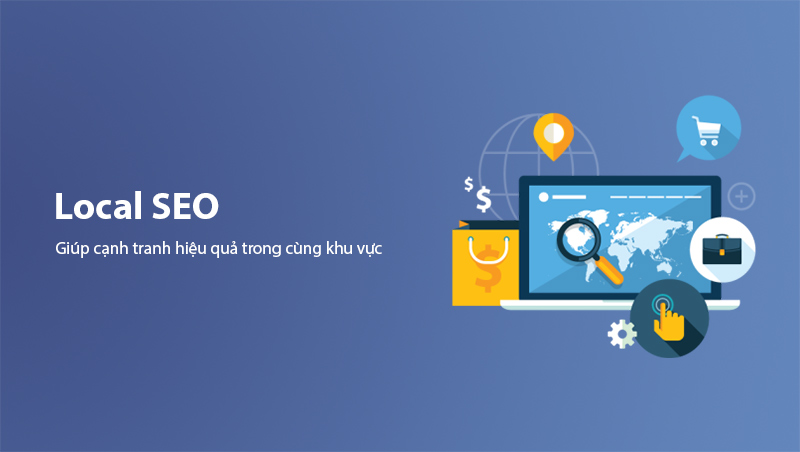
Unlike traditional SEO, Local SEO aims to connect businesses with potential customers in a specific area. By optimizing for location-specific keywords and factors, Local SEO boosts online visibility, increases conversion rates, and drives revenue.
This becomes especially crucial as more people use mobile devices to search for products and services nearby. According to statistics:
- 46% of all Google searches are related to local information.
- 76% of users who search for a nearby business visit a store within 24 hours.
With this trend, adopting Local SEO not only helps businesses compete effectively in their region but also plays a vital role in enhancing brand trustworthiness.
What Are the Benefits of Local SEO for Businesses?
Attract Local Potential Customers
Local SEO enables businesses to reach the right target audience within their local area. When users search for keywords like "nearby phone store" or "auto repair shop in Hanoi," Google prioritizes showing the most relevant results close to them. This increases the chances of businesses being discovered and visited.
Boost Visibility on Google Maps
Optimizing Local SEO not only helps businesses appear on Google Search but also stand out on Google Maps, where millions of users search daily. Detailed information such as address, phone number, business hours, and customer reviews will help attract users more effectively.
Improve Conversion Rates
Customers searching for local businesses often have a high intent to purchase or use services. For instance, someone searching for "nearby bakery" is likely looking for a specific product immediately. Local SEO ensures you show up at the right place and time, increasing conversion rates and driving revenue.
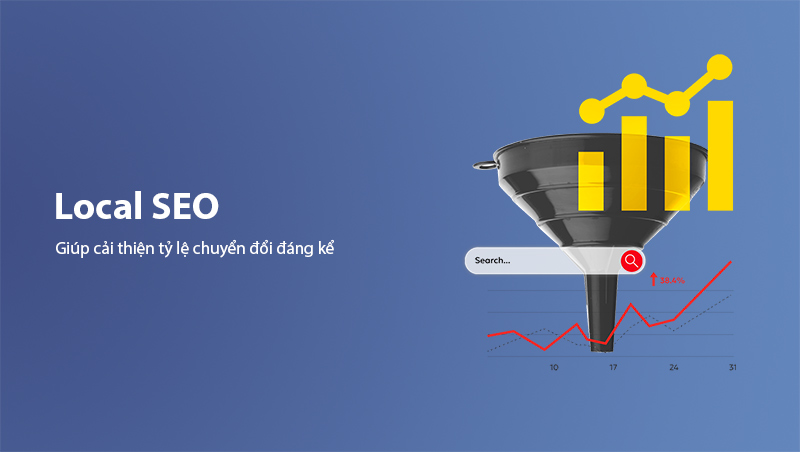
Build Trust Through Online Reviews
Businesses with positive reviews on Google My Business or other platforms are more likely to be favored by users. These reviews not only improve SEO rankings but also enhance brand credibility, making it easier for new customers to trust you.
Save Advertising Costs
Unlike paid advertising (PPC), Local SEO is a sustainable and cost-effective approach. By optimizing Google My Business and other relevant factors, businesses can achieve high efficiency without a significant investment in advertising.
Enhance User Experience
Local SEO not only optimizes visibility but also improves customer experience. Accurate information such as address, phone number, business hours, and directions on Google Maps makes it easier for customers to access your services.
Key Ranking Factors in Local SEO
To achieve high rankings in local search results, you need to understand the key factors in Local SEO. Google considers several criteria when determining rankings, and below are the core elements to focus on:
Google My Business (GMB)
Your Google My Business profile plays a central role in Local SEO. Optimizing this profile not only helps businesses appear on Google Maps but also significantly impacts rankings in local searches. Key aspects to focus on include:
- Complete information: Business name, address, phone number (NAP), business hours, website.
- Upload high-quality images of products, services, or facilities.
- Use local keywords in the business description.
- Regularly update posts, offers, or events.
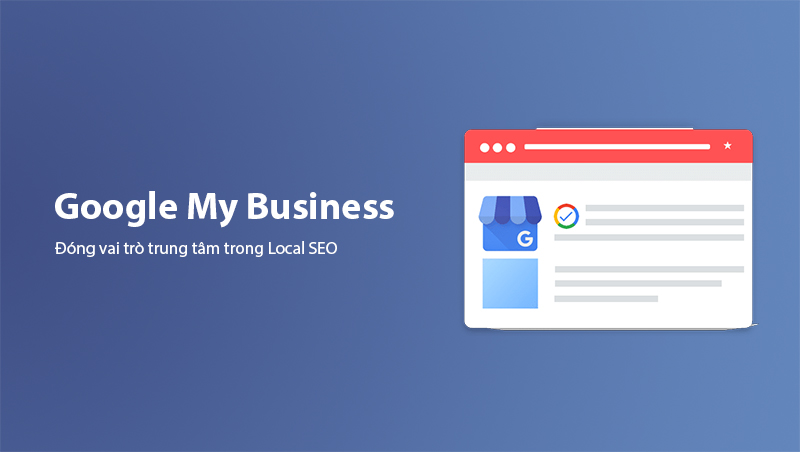
Customer Reviews and Responses
Online reviews are one of the factors significantly influencing Local SEO. Businesses with more positive reviews are often prioritized by Google. Some tips to leverage this factor:
- Encourage customers to leave reviews after using your services.
- Respond to all reviews, especially negative ones, to demonstrate professionalism and customer care.
NAP Consistency
NAP (Name, Address, Phone) must be consistent across all online platforms such as your website, Google My Business, social media, and local directories. Inconsistency can lead Google to lower your business's credibility and affect rankings.

Backlinks From Local Sources
Backlinks from local websites or reputable directories (e.g., Yelp, Foody, or local news sites) play an important role in Local SEO. Ways to build backlinks include:
- Partnering with local businesses or communities.
- Featuring in local news articles.
- Registering in local business directories.
Optimize for Local Keywords
Using local keywords in your website content, titles, meta descriptions, and H1 tags helps Google better understand your business's service area. For example, if you own a coffee shop in Da Nang, keywords like “coffee shop Da Nang” or “best cafe in Da Nang” should appear in your content.
Mobile Optimization
Most local searches are conducted on mobile devices nowadays. Therefore, optimizing your website for mobile display is essential. This includes:
- Fast loading speeds.
- A mobile-friendly interface.
- Easy-to-use buttons for calling or getting directions.
Social Media Engagement
Although not a direct ranking factor, active presence on social media platforms can support Local SEO. Posts with updates, promotions, or interactive visuals will attract more attention to your business.
By focusing on these factors, your business will not only improve its rankings but also increase credibility and effectively attract local customers.
How Is Local SEO Different From Traditional SEO?
Here’s a detailed comparison between Local SEO and Traditional SEO to clarify their key differences:
| Factor | Local SEO | Traditional SEO |
|---|---|---|
| Target Scope | Focuses on queries with geographical elements like “restaurants near me” or “hotels in Da Nang”, aiming to attract customers in a specific region. | Targets a global or broader audience, not restricted by geographic location. |
| Keyword Usage | Emphasizes keywords with geographical elements like “car repair service in Hanoi”, “salon District 1”. | Focuses on general keywords suitable for nationwide or international audiences. |
| Ranking Factors | Heavily considers factors like Google My Business, consistent NAP, customer reviews, and presence on local directories. | Relies more on high-quality content, backlinks, and website authority. |
| Tools and Platforms | Uses tools like Google My Business, Google Maps, BrightLocal, or local directories to enhance visibility. | Utilizes keyword research and analysis tools like Ahrefs, SEMrush, or Google Search Console for content optimization. |
| Online Reviews | Customer reviews are crucial, directly impacting rankings and customer trust. | Reviews are less significant, as ranking factors are more content and link-focused. |
| Search Queries | Focuses on “near me” queries and searches related to a specific area. | Targets broader queries not tied to specific locations. |
Why Combine Both Strategies?
For many businesses, especially those with a mix of local and non-local audiences, combining Local SEO and Traditional SEO yields the best results. This approach allows businesses to attract local customers while also reaching wider markets for products or services that can be delivered remotely.
Effective Local SEO Implementation Process
To execute Local SEO effectively, you need a solid foundation to optimize relevant factors. Here’s a detailed checklist to guide you:
Optimize Your Brand Image
Your logo is among the first elements search engines recognize. Optimizing it improves both user experience and Local SEO performance.
How to Optimize Your Logo:
- File Name: Use a file name containing relevant local keywords, product/service names, and brand name. For example,
logo-car-repair-da-nang.png. - ALT Description: Add ALT text, e.g., "Car Repair - Brand Name - Da Nang", to help search engines understand the image content.
- Logo Link: Ensure your logo links to the homepage with a title tag containing local keywords.
Provide Complete and Consistent Contact Information
Your contact information (NAP: Name, Address, Phone) plays a critical role in Local SEO. Consistency builds credibility with both Google and customers.
Key Points to Note:
- Display Full Details: Include the company name, address, phone number with area code, and a contact email.
- Placement: Add NAP details to the homepage, footer of all pages, and the contact page.
- Area Code Usage: Ensure your phone number includes the area code to make it easier for Google to identify your location.
- Consistency Across Platforms: Match NAP details across your website, Google My Business, and social platforms.
Register and Optimize Google My Business (GMB)
Google My Business (GMB) is a cornerstone of any Local SEO strategy. Setting up and optimizing GMB ensures your business stands out on Google Maps and local search results.
Steps to Optimize GMB:
- Complete Information: Fill out details like business name, address, phone number, working hours, and website link.
- Upload Quality Images: Showcase your products, premises, and logo with high-quality visuals.
- Respond to Reviews: Actively reply to reviews, positive or negative, to build trust.
- Post Regular Updates: Share posts about offers, events, or announcements to maintain engagement.
Optimize for Local Keywords
Local keywords help Google understand the scope of your services and your operational area.
Steps to Optimize Keywords:
- Local Keywords Research: Use tools like Google Keyword Planner or SEMrush to find relevant local keywords.
- Integrate Into Content: Include keywords in titles, meta descriptions, URLs, and website content.
- Optimize the Contact Page: Use keywords in H1, H2 tags, and content. Example: “Car repair service in Da Nang”.
Embed Google Maps on Your Website
Adding Google Maps makes it easier for users to locate your business.
How to Add Google Maps:
- Display the Map: Embed Google Maps on your contact page to show your business location.
- Add Directions: Include a feature that provides directions from the user’s location to your business.
Implement Schema for Local Business
Schema Markup helps Google understand your business better through structured data.
Steps to Add Schema:
- Use Local Business Schema: Include details like business name, address, phone number, and working hours.
- Use Tools: Use plugins like Yoast SEO Local to generate Schema automatically.
Leverage Social Media Presence
Social media platforms contribute indirectly to Local SEO by enhancing your business’s online visibility.
Steps to Utilize Social Media:
- Create Business Accounts: Ensure complete profiles with contact information, logo, and cover images.
- Post Engaging Content: Share updates, offers, and interactive visuals related to your services.
Build Local Backlinks
Backlinks from local sources increase your website’s authority and Local SEO performance.
Steps to Build Backlinks:
- Write PR Articles: Publish articles on local news outlets or industry-specific websites.
- Partner Locally: Exchange links with other businesses in the area.
Design an SEO-Friendly Website
Your website needs to be optimized for all devices, especially mobile.
Steps to Optimize Your Website:
- Responsive Design: Ensure the website displays well on mobile, tablets, and desktops.
- Fast Load Times: Use tools like Google PageSpeed Insights to improve speed.
Blog About Local Topics
Blogs are an excellent way to incorporate local keywords and create valuable content.
Blog Topic Ideas:
- Write posts like “Top 5 Restaurants in Da Nang” or “DIY Car Maintenance Tips in Hanoi.”
- Link blog content to main service pages to improve conversions.
By following this checklist, you’ll build a solid foundation for effective Local SEO, improving rankings and attracting more local customers.
Tools to Support Effective Local SEO
Implementing Local SEO successfully requires the right tools to optimize and monitor your performance. Below are some of the top tools to help you achieve your goals efficiently:
Google My Business (GMB)
This is an essential tool for Local SEO, enabling you to manage your business’s presence on Google Search and Google Maps.
- Key Features: Manage your business profile, track impressions, and update contact details.
- Benefits: Easy to use, free, and tightly integrated with Google’s ecosystem.
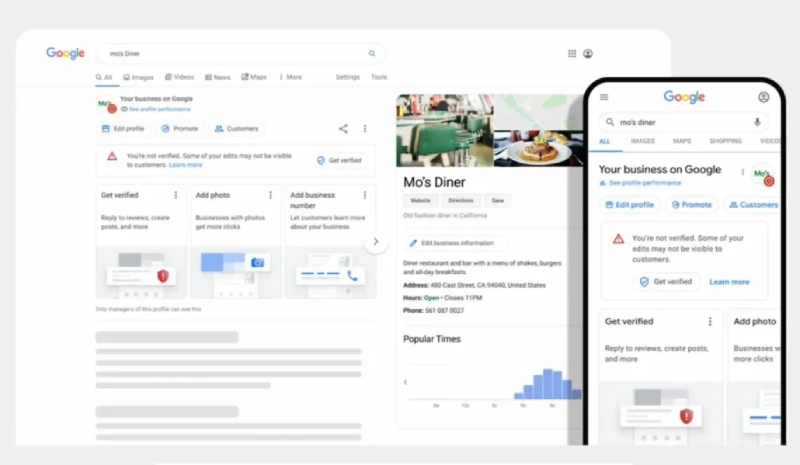
BrightLocal
BrightLocal is a powerful tool to monitor local SEO performance and manage your online business listings.
- Key Features: Track local keyword rankings, evaluate competitors, and audit NAP consistency.
- Benefits: User-friendly interface, detailed reports, and a focus on local SEO factors.
Moz Local
Moz Local helps you manage and ensure your business information is consistent across online directories.
- Key Features: NAP consistency checks, data synchronization across platforms, and error detection alerts.
- Benefits: Saves time and ensures data accuracy across platforms.
SEMrush Local SEO Toolkit
SEMrush’s Local SEO Toolkit provides features for keyword analysis, ranking tracking, and online presence evaluation.
- Key Features: Research local keywords, develop content strategies, and analyze competitors.
- Benefits: Multi-functional and suitable for both Local SEO and broader SEO strategies.
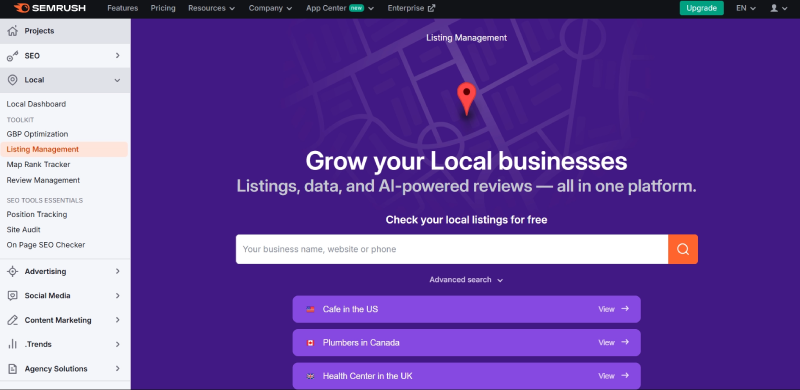
Ahrefs
Ahrefs is renowned for its link-building and keyword tracking capabilities. While not specifically designed for Local SEO, it’s excellent for analyzing backlinks and local keyword opportunities.
- Key Features: Analyze local backlinks, conduct keyword research, and assess competitors.
- Benefits: High accuracy and comprehensive data insights.
ReviewTrackers
This tool helps you manage and monitor customer reviews across multiple platforms.
- Key Features: Collect reviews from Google, Yelp, TripAdvisor, and more.
- Benefits: Enhance your business reputation by effectively responding to customer feedback.
Why Use These Tools?
These tools not only streamline your Local SEO efforts but also save time and resources. Utilizing them helps you manage online visibility, improve customer experience, and achieve sustainable business growth.
Latest Local SEO Trends
Local SEO is continuously evolving to match user search behaviors and Google’s algorithms. Staying updated with the latest trends ensures your business remains competitive. Here are the most notable trends today:
Voice Search Optimization
The rise of voice assistants like Google Assistant, Siri, and Alexa is transforming search behavior. Users often use natural, conversational queries such as:
- “What restaurants nearby serve breakfast?”
- “Where can I find a car repair shop open at 8 AM near me?”
How to Optimize for Voice Search:
- Use natural language and long-tail keywords in your content.
- Include detailed information like business hours, locations, and services offered.
Mobile-First Searches
A majority of local searches are conducted on mobile devices. According to research, 76% of users who perform a local search on their mobile devices visit a business within 24 hours.
How to Adapt:
- Ensure your website is mobile-friendly with responsive design and fast loading speeds.
- Add interactive features like click-to-call buttons or direct navigation links.
"Near Me" Search Queries
Searches with terms like “near me” or “nearby” have surged in recent years. Google uses user location to provide accurate results.
How to Optimize:
- Keep your Google My Business profile updated with precise NAP details.
- Use location-based keywords in your website content.
User Behavior Signals
Google increasingly values user experience factors, such as:
- Time spent on your website.
- Click-through rates (CTR) to your business profile.
- Customer reviews and engagement.
How to Improve User Experience:
- Create engaging, easy-to-navigate content.
- Encourage positive reviews and address feedback promptly.
AI and Machine Learning in Local SEO
Google’s AI and machine learning algorithms, such as RankBrain, help deliver results that match user intent, even if the search query isn’t perfectly structured.
How to Leverage This Trend:
- Develop high-quality content that directly addresses user questions.
- Ensure your business information is clear, accurate, and updated.
Common Local SEO Mistakes to Avoid
When implementing Local SEO, many businesses fall into common traps that can hinder their efforts. Below are some frequent mistakes and how to fix them:
Inconsistent NAP Information
Inconsistent NAP (Name, Address, Phone) details across platforms can confuse Google and users.
- Impact: Reduces trust and lowers your business ranking.
- Solution: Regularly audit and update NAP information on all platforms.
Keyword Stuffing
Overloading your content or GMB profile with excessive local keywords can backfire.
- Impact: May lead to Google penalties for violating SEO guidelines.
- Solution: Use keywords naturally and focus on delivering value to users.
Ignoring Negative Reviews
Failing to address negative customer reviews can damage your reputation.
- Impact: Reduces trust among potential customers and signals poor customer service to Google.
- Solution: Respond promptly and professionally to all reviews, including negative ones.
Incomplete Google My Business Profile
An incomplete or outdated GMB profile limits your visibility on Google.
- Impact: Decreases your chances of appearing in local search results or Google Maps.
- Solution: Fill out all fields, update regularly, and engage with customer queries.
Not Tracking Performance
Neglecting to measure Local SEO performance means you won’t know what works or what needs improvement.
- Impact: Wastes resources without delivering results.
- Solution: Use tools like Google Analytics, Google Search Console, GMB Insights, and SEMrush to track performance.
Low-Quality Backlinks
Using irrelevant or low-quality backlinks can harm your site’s credibility.
- Impact: Google may penalize your site for violating link-building policies.
- Solution: Focus on acquiring links from reputable local directories and news outlets.
Case Studies of Local SEO Success in Specific Industries
Understanding how Local SEO works in practice is best demonstrated through real-world examples. Below are success stories from various industries showcasing how Local SEO can drive growth:
Local SEO for Restaurants
Case Study: A small restaurant chain in Hanoi optimized its Google My Business profile, shared high-quality food images, and regularly updated its menu.
- Strategies Used:
- Posted promotional updates on Google My Business.
- Encouraged customers to leave positive reviews.
- Used keywords like “best hotpot restaurant in Hanoi” in descriptions.
- Results:
- Google Maps visibility increased by 120%.
- Revenue grew by 35% within six months.
Local SEO for Repair Services
Case Study: A car repair shop in Ho Chi Minh City synchronized its NAP data across platforms and published blogs offering vehicle maintenance tips.
- Strategies Used:
- Wrote blog posts like “How to Check Tires Before a Long Trip in HCMC”.
- Registered on local directories like Yelp and Foody.
- Updated working hours on Google My Business.
- Results:
- Phone inquiries from Google My Business increased by 200%.
- Received a 4.8-star rating on Google.
These examples demonstrate how tailored Local SEO strategies can yield significant growth across different industries. By optimizing for local search intent, businesses can effectively attract and retain customers while standing out in a competitive market.
Conclusion
Local SEO has become an indispensable tool for businesses, especially those targeting customers in specific regions. By helping businesses appear in local search results, Local SEO not only increases online visibility but also drives revenue, builds trust, and differentiates businesses in an increasingly competitive market.
Key Benefits of Local SEO
- Effectively Reach Local Customers: Connect your business with people who genuinely need your products or services in a specific area.
- Increase Visibility on Google Maps: Make it easier for customers to find you through geographical guidance.
- Build Trust: Positive reviews and professional profiles on online platforms enhance credibility.
- Cost Efficiency: A sustainable marketing strategy that is more affordable than paid advertising.
Next Steps for Businesses
To stay ahead in the competitive digital landscape, businesses need to prioritize Local SEO. Start by:
- Optimizing your Google My Business profile.
- Ensuring consistent NAP information across platforms.
- Building a strong foundation of local keywords and backlinks.
- Regularly monitoring performance using tools like Google Analytics or BrightLocal.
Local SEO isn’t just a trend—it’s a crucial element for long-term, sustainable business growth. Investing in Local SEO today means setting your business up for continued success in the future.
Latest Posts

Lesson 26. How to Use break, continue, and return in Java | Learn Java Basics
A guide on how to use break, continue, and return statements in Java to control loops and program execution flow effectively.

Lesson 25. The do-while Loop in Java | Learn Basic Java
A detailed guide on the do-while loop in Java, including syntax, usage, examples, and comparison with the while loop.

Lesson 24. How to Convert Decimal to Binary in Java | Learn Basic Java
A guide on how to convert numbers from the decimal system to the binary system in Java using different methods, with illustrative examples.

Lesson 23. How to Use the While Loop in Java | Learn Java Basics
Learn how to use the while loop in Java with syntax, real-world examples, and practical applications in Java programming.
Related Posts

What is Domain Authority? 13-Step Guide to Improve DA Score for Your Website in 2025
Discover what Domain Authority is and its importance in SEO. A detailed guide on the 13-step process to effectively increase DA, from content research and technical optimization to building quality backlinks for a sustainable SEO strategy.

What is Page Authority? The Importance of Page Authority for SEO in 2025
Learn what Page Authority (PA) is and its role in SEO optimization to help improve your website's ranking on search engines in 2025.

What is Google Index? A Guide to 13 Ways to Speed Up Website Indexing in 2025
Discover what Google Index is and learn detailed guidelines on 13 effective ways to get your website indexed quickly and boost your SEO rankings on Google in 2025.
![What is Onpage SEO? 23+ Basic & Advanced Onpage Optimization Checklist [2025]](/blog-posts/seo-onpage/seo-onpage-thumb.jpg)
What is Onpage SEO? 23+ Basic & Advanced Onpage Optimization Checklist [2025]
Learn the concept of Onpage SEO and the 23+ basic to advanced Onpage optimization checklist to improve website quality and boost search rankings effectively.

